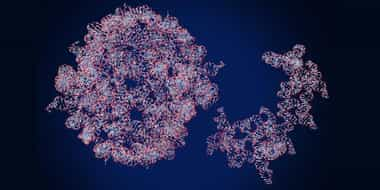
Oct 10, 2025
Blog biotechnology Bioseparation Systems Market: Where Precision Meets Biotech Growth
Bioseparation the set of technologies that isolates and purifies biological molecules such as proteins, antibodies, nucleic acids and viral vectors has quietly become one of the most important backbones of modern biopharma. As biologics, cell & gene therapies, and mRNA platforms scale from lab benches to manufacturing lines, demand for faster, higher-yield, and regulatory-compliant separation systems has exploded. This blog breaks down the market today, the forces driving it, the technologies and players to watch, and where the next opportunities lie.
Estimates vary by source, but most market studies agree the bioseparation systems market is substantial and growing at a high single-digit to low double-digit CAGR. The global market for bioseparation systems was valued at an estimated $30.6 billion in 2024 and is slated to reach $45.1 billion by the end of 2030.
Explosion of biologics & advanced therapies - Monoclonal antibodies, recombinant proteins, viral vectors and cell-based therapies all require complex downstream purification steps; more biologics = more separation gear.
Shift from batch to continuous and single-use manufacturing - Manufacturers are adopting continuous processes and single-use consumables to reduce contamination risk and speed time-to-market; that pushes demand for adaptable membrane and chromatography solutions.
Regulatory and purity expectations - Stricter impurity limits and the need for consistent, validated processes favor high-performance separation platforms.
Cost pressure & efficiency - Downstream steps historically make up a large share of production cost for biologics; technologies that increase yield and cut cycle time are commercially attractive.
The global market for bioseparation systems is expected to grow from $32.5 billion in 2025 and is projected to reach $45.1 billion by the end of 2030, at a compound annual growth rate (CAGR) of 6.8% during the forecast period of 2025 to 2030.
Single-use integrated platforms — Systems that combine clarification, capture and polishing in disposable formats have strong commercial appeal.
Continuous downstream processing — Companies offering continuous chromatography and filtration that can cut cycle time and footprint will be in demand.
Service & CMO partnerships — As smaller biotech companies outsource manufacture, CMOs that offer advanced bioseparation capabilities become strategic partners.
Specialized solutions for gene & cell therapies — Purification of viral vectors, exosomes and cell products is a nascent but rapidly expanding niche.
Most market analyses project continued healthy growth driven by biologics expansion, increasing adoption of single-use and continuous technologies, and rising capacity in emerging markets. Exact figures differ by report, but expect steady double-digit or high single-digit CAGR ranges depending on which segments you prioritize (e.g., consumables vs. equipment vs. services).
The bioseparation market sits at the intersection of biology, engineering and manufacturing economics. As therapeutics diversify and manufacturing paradigms evolve, separation systems that offer higher throughput, lower cost of goods, and regulatory robustness will capture the lion’s share of growth. In short: purification isn’t just a downstream headache anymore — it’s a competitive differentiator.

I am Adarsh Rawat and I have a degree in BBA from Jamia Milia Islamia, I have honed a diverse skill set that spans digital marketing, traditional advertising, brand management, and market research. My journey in marketing has been characterized by a commitment to innovation and an ability to adapt to emerging trends.

As one of the largest and fastest-growing life sciences markets in the world, Ch...

In business and forensics, the most challenging questions rarely come with strai...

Messenger RNA (mRNA) therapeutics have revolutionized healthcare, transitioning ...

We are your trusted research partner, providing actionable insights and custom consulting across life sciences, advanced materials, and technology. Allow BCC Research to nurture your smartest business decisions today, tomorrow, and beyond.
Contact UsBCC Research provides objective, unbiased measurement and assessment of market opportunities with detailed market research reports. Our experienced industry analysts assess growth opportunities, market sizing, technologies, applications, supply chains and companies with the singular goal of helping you make informed business decisions, free of noise and hype.